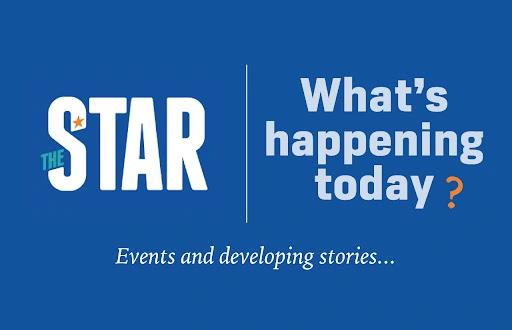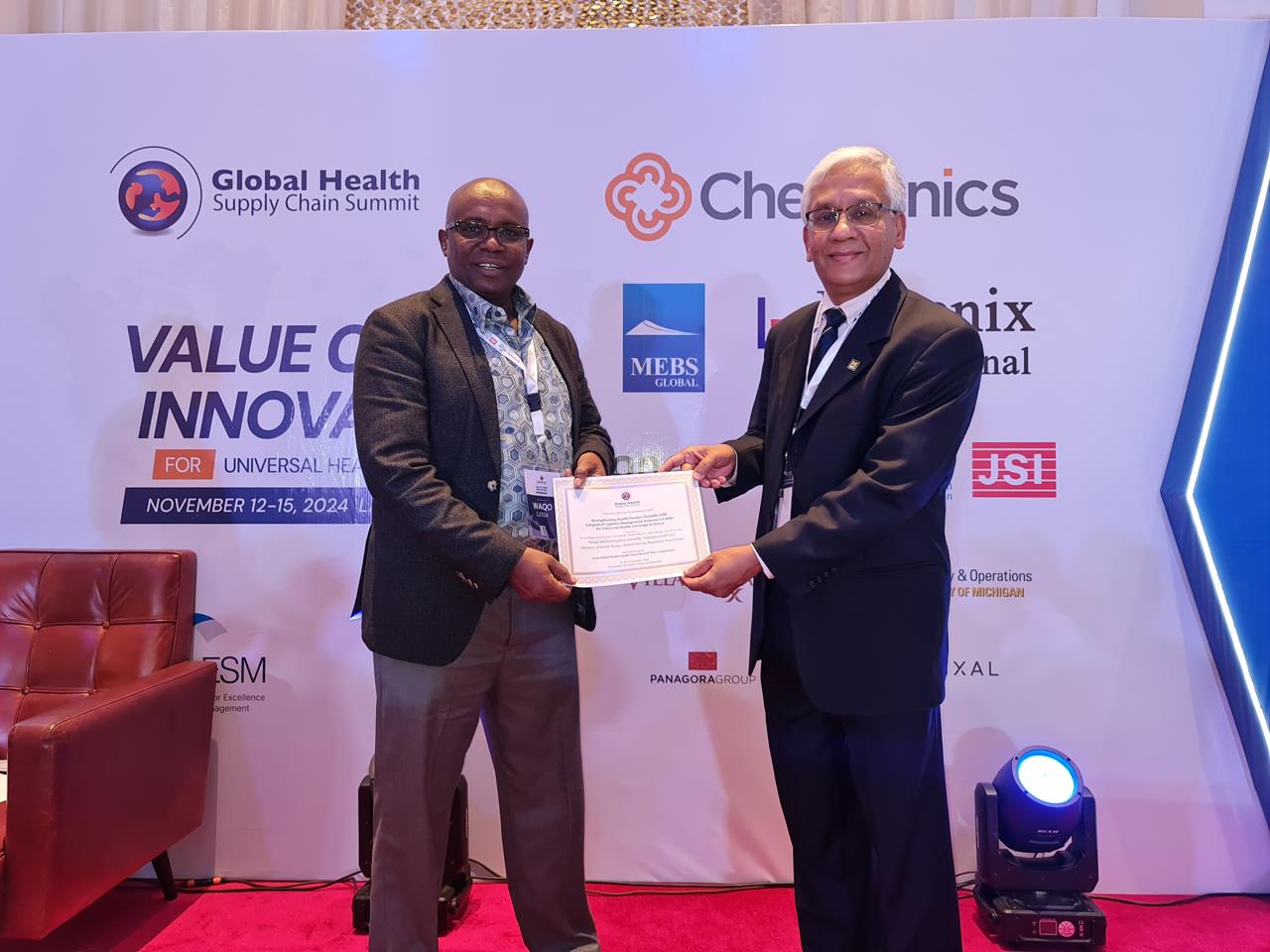

The Kenya Medical Supplies Authority’s (KEMSA) innovative integrated
Logistics Management Information System (i-LMIS) and its Last Mile Smart Net
Distribution Project (LEAP) were among the four finalists in the prestigious
Global Health Supply Chain Summit (GHSCS) competition, held in Lagos, Nigeria.
The other two finalists were from Ethiopia and Nigeria.
In a highly competitive field of over 31 international applications, KEMSA’s dual entries emerged victorious, earning the organization worldwide recognition for its advancements in health supply chain solutions.
The i-LMIS was lauded for its transformative impact on improving commodity security, enhancing the accuracy of forecasting and optimizing demand planning.
Meanwhile, another first for KEMSA, the Smart Net Distribution project was celebrated for its innovative digital platform, which has significantly improved access to life-saving malaria prevention Long Lasting Insecticidal Nets (LLINs).
While acknowledging the importance of the innovations, KEMSA CEO Dr. Waqo Ejersa, emphasized the unique contribution of i-LMIS to global health supply chain management.
“KEMSA has invested heavily in developing systems that ensure optimal forecasting and demand planning for health commodities. This enhances transparency, visibility, and accountability at every level of the supply chain,” Dr. Ejersa said.
Dr Ejersa also highlighted that the i-LMIS system plays a critical role in tracking donor and government funding commitments and issuing alerts to prevent stockouts.
These systems have proved effective in managing the distribution of malaria prevention tools and family planning products, setting a model that can be replicated in other countries.
“We are honoured to receive these prestigious awards, which reflect the dedication and hard work of everyone involved in these projects. Our digital approach to the mosquito net distribution and commodities management is not just a technological advancement; it is a promise of improved health and well-being for the thousands of households we serve,” said Dr Ejersa.

Dr. Ejersa expressed gratitude to the strategic partners who have supported KEMSA’s efforts to enhance service delivery, ensuring that health commodities reach those in need in a timely and efficient manner.
Through the smart distribution system – Digital LEAP, KEMSA successfully distributed 15.3 million treated mosquito nets across 22 counties, reaching over 5 million households in malaria-endemic regions.
By deploying automated, intelligent distribution systems, KEMSA enhanced the accuracy, efficiency and timeliness of net deliveries, ensuring that vulnerable communities received essential malaria prevention tools.
These award-winning initiatives underscore KEMSA’s ongoing commitment to integrating advanced technological systems that enhance the end-to-end visibility of all health products, strengthening accountability and transparency throughout the supply chain.
Originally piloted in the Family Planning Program with support from UNFPA, the system has since expanded to cover a wide range of health programs, including HIV, TB, Malaria, Non-Communicable Diseases (NCDs), Oncology, Nutrition, Tracer, and Ophthalmology.
With support from key global partners such as UNFPA, the Global Fund, FCDO, USAID-PMI, Path International, the Fred Hollows Foundation, UNICEF, CHAI and the African Institute for Health and Development (AIHD).
i-LMIS is now operational across all 47 counties in Kenya, making a significant impact on the country's health commodity security.
What is i-LMIS
Developed by a team of KEMSA ICT experts, led by Senior Programs Officers Dennis Ndwiga and Martin Mwenda, the i-LMIS system comprises three key components.
They include the Commodity Early Warning and Alert System (CEWAS), the Allocation System, and the electronic Proof of Delivery (e-POD) application.
Key features of i-LMIS include the Commodity Early Warning and Alert System (CEWAS). This predictive analytics tool uses early warning indicators, dashboards, and alerts to prevent wastage and stockouts.
By providing end-to-end visibility from the facility level to the KEMSA pipeline, CEWAS helps manage inventory efficiently, avoiding issues such as expiries, overstocks, or pilferage.
It also has a stock and supply monitoring tool that ensures that commodity stocks are monitored in real-time, helping to forecast optimal stock levels and reducing the likelihood of shortages.
Improved Transparency and Accountability: To enhance visibility across the supply chain and ensure that stakeholders can track commodity distribution and funding flows, i-LMIS has an improved transparency and accountability tool.
With its data-driven approach, the I-LMIS has an Optimized Allocation System that helps streamline ordering and ensures that health commodities are distributed efficiently based on actual consumption patterns.











